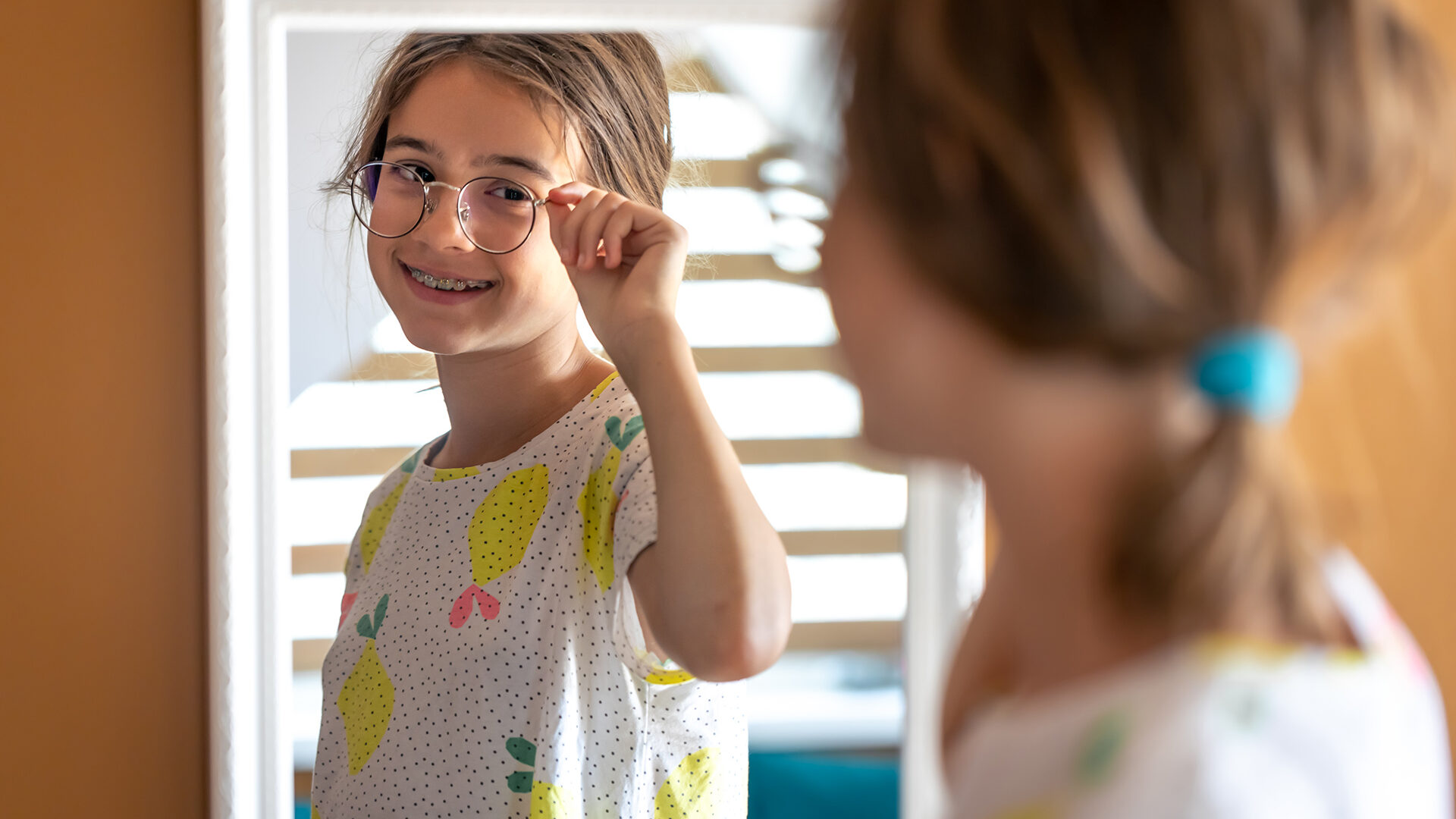Myopia, or nearsightedness, is more than just needing glasses to see clearly. It’s a condition where the eye grows longer than normal, making it hard to see things in the distance, like the whiteboard at school, street signs, or even the TV. Over time, myopia can worsen, and if left unmanaged, it can lead to more serious vision problems later in life.
Signs Your Child Might Have Myopia
Parents often wonder how they can tell if their child might have myopia. Here are some common signs to watch for:
- Squinting to see objects far away, like the board at school or the TV.
- Complaints of blurry vision when looking at distant objects.
- Holding books, phones, or tablets very close to their face.
- Frequent headaches or eye strain, especially after tasks that require focusing on things far away.
- Difficulty seeing clearly outdoors, such as when playing sports or looking at objects in the distance.
If you notice any of these signs, it’s important to schedule an eye exam with your child’s eye doctor.
Genetics and Beyond
While family history plays a significant role in myopia development – if mom or dad wears glasses or contacts for nearsightedness, their children are more likely to develop it – environmental and lifestyle factors can amplify this risk. Increased time spent on handheld devices and reduced outdoor activity are known contributors to the onset and progression of myopia.
Technology That Helps: MiSight® 1 Day Contact Lenses
One of the most effective ways to manage myopia in children is with MiSight® 1 day contact lenses. These lenses are specially designed for children ages 8-12 and are FDA-approved* to slow the progression of myopia. By starting treatment early, parents can help their children maintain better vision and reduce the risk of future complications associated with high myopia.
To see how myopia progresses and how MiSight® can help, explore the MiSight Vision Simulator and check out their website for more resources and vidoes.
Why Early Myopia Control Matters
When myopia is managed early, it can make a big difference. Slowing down its progression not only helps your child see better now but also protects their eye health in the future. This means fewer worries about severe eye conditions and a brighter, clearer world for your child as they grow up.
If you’re concerned about your child’s vision or have a family history of myopia, contact your eye care provider today. Let’s work together to give your child the best possible start to a lifetime of healthy vision. For more information about myopia control and to find a provider near you, visit the MiSight website.

